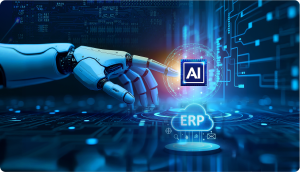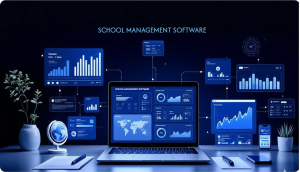
Blueprints serve as the essential roadmap for turning complex designs into reality. Extracting parts and material lists manually from blueprints has been tedious and error-prone. However, machine learning revolutionizes how we handle blueprints, making obtaining crucial information faster and more accurate. Dive into the intersection of blueprints and artificial intelligence and see how AI machine learning streamlines the extraction of parts and material lists(AI/ML BOM).
The Challenge of Manual Extraction
Extracting the Bill of Materials from blueprints manually poses several challenges. It is time-consuming, prone to human error, and inconsistent across interpretations. Updates to designs complicate accuracy, and modern complex designs amplify these difficulties. Specialized knowledge is essential but often limited, leading to resource-intensive efforts. Maintaining documentation and traceability further burdens the process, impacting project timelines and efficiency. These challenges underscore the necessity for more efficient, error-free methods in bill of materials extraction, ensuring precision and reliability across industries.
Enter Machine Learning
Machine learning, a branch of artificial intelligence, enables computers to discern patterns and anticipate outcomes from data. Its integration allows for automated extraction of bill of materials from blueprints. This innovation minimizes human effort and enhances precision, marking a significant advancement in project efficiency and reliability.
Machine Learning for Blueprint Analysis
Machine learning (ML) offers a sophisticated approach to blueprint analysis. Here’s a breakdown of the key processes involved:

Data Preprocessing
The initial stage involves preparing the data for analysis. Blueprint images are converted into a format suitable for the ML model’s comprehension. Techniques like image normalization and resizing ensure optimal accuracy during the subsequent phases

Feature Extraction
This critical step focuses on identifying key elements within the blueprint. Lines, shapes, and symbols are the building blocks of a blueprint’s language. Convolutional Neural Networks (CNNs) excel at recognizing these features. As the model trains, it learns to distinguish various components and patterns, laying the groundwork for accurate identification of parts and materials.

Model Training
The core of ML lies in training the model. A labeled dataset containing annotated blueprints serves as the training ground. Each blueprint is essentially a labeled example, where components have already been identified. By studying these examples, the model learns to associate specific features with corresponding components, progressively refining its ability to accurately identify and categorize elements on new blueprints.

Testing and Validation
After the training phase, the model undergoes testing on new blueprints to assess its ability to generalize effectively. Validation steps serve to fine-tune the model and enhance its accuracy in extracting parts and materials lists from diverse blueprint formats

Integration with Existing Workflows
Finally, the trained model needs to be seamlessly integrated into the established workflows employed by engineers. This integration ensures a smooth transition from blueprint analysis to the generation of parts and materials lists, fostering a more efficient design and construction process.
By delving into these steps, we gain a deeper understanding of how ML goes beyond a mere black box and transforms into a powerful tool for revolutionizing blueprint analysis.
The Advantages of AI Machine Learning
Here’s how AI/ML fosters efficiency and accuracy in blueprint analysis:

Enhanced Workflow
ML automates the analysis of blueprints, eliminating the need for manual extraction of parts and materials lists. This translates to a significant reduction in processing time, allowing professionals to dedicate their expertise to more strategic and creative aspects of a project.

Minimizing Error
Human error is an inherent factor in manual data extraction. ML algorithms, trained on extensive datasets, consistently apply predefined rules during analysis. This meticulous approach significantly reduces the risk of errors in parts and materials identification, leading to greater consistency and precision in construction projects.

Cost Optimization
Accurate data is fundamental for efficient procurement and planning. ML-driven analysis minimizes errors in material selection, thereby preventing costly rework and delays. This translates to substantial cost savings throughout the project lifecycle.

Adaptability Across Diverse Projects
The versatility of ML is a key advantage. These models can be effectively trained on a wide range of blueprints, encompassing an array of project types. This ensures the continued effectiveness and scalability of ML in various endeavors.
The synergy between ML and blueprint analysis represents a transformative leap across industries. Automating the extraction of bill of materials frees professionals to focus on innovation and problem-solving instead of spending hours on manual data extraction. As this technology evolves, it will transform the engineering field, leading to a future with more efficiency, accuracy, and cost savings.
At iTech, our AI/ML development services empower businesses to leverage cutting-edge technology for streamlined blueprint analysis. Partner with us to revolutionize your workflows and achieve unmatched precision in your projects.







